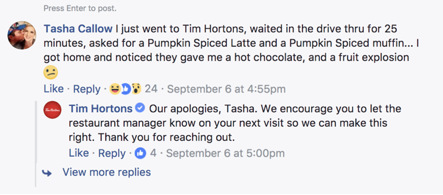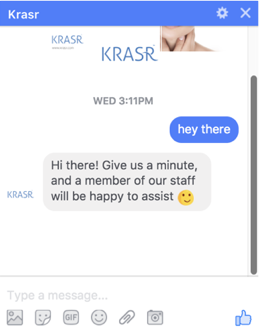Social media sites have become popular platforms for brands looking to communicate with their customers, and they provide an opportunity to deliver stellar customer service experiences. Social media is useful for improving people’s impressions of brands compared to traditional means of communication because when you solve problems for your customers online, thousands of others may also see your great response.
That being said, the risk still exists for things to go wrong. We’ve outlined a few best practices for providing exceptional customer service on social media that will make sure you kill it, and not your brand image.
Contents
Find Your Customers
Providing exceptional customer service takes time and resources, and you should allocate these wisely by determining which social media sites your customers use the most. For most companies, LinkedIn, Facebook and Twitter are popular but depending on your industry, your audience might be more engaged through Instagram or YouTube.
The social media sites where you are having the most success (most shares, likes, and other engagements) should be the platforms you invest in since they are where:
- Your target audience is most active.
- Your customers are more likely to contact you if they have a concern.
Once you have identified your audiences watering holes for information, reviews and engagement. It’s important to have a strategy for engagement.
Listen, Listen, Listen!
Social media has changed the way customers interact with brands and vise versa. Marketing is no longer placing ads in front of people that communicate your brand message, product and telling what the end-user should feel or think about your brand. Social Media has created two-way communication between your customers, potential customers and you. It’s now an outlet to directly respond to you and express their thoughts about your product or services. Therefore, you must pay attention to what people are saying to you and about you, and respond accordingly.
Doing this involves more than just checking your direct messages or having an auto-responder set to reply when you can not. You need to have a plan in place for ongoing checks for negative (and positive) comments left on your posts and also check for posts outside your accounts where people may comment about you. By using tools like Hootsuite, you can be notified whenever someone mentions your brand, regardless of whether or not they mention you or contact you directly.
People don’t just message brands, they Tweet at them – which is out there for the world to see.
Respond, Always!
No one likes being ignored, and making sure you respond to people who communicate with your brand is crucial. Negative comments that go unanswered remain there for the world to see and make your brand look careless and cold.
Also, never delete negative comments. People who are willing to go to the effort of posting a negative comment are more than willing to point out when their comments have been deleted, and this can spell social suicide for you. Instead, own how you take their criticism (it will make you look good) and try to turn the negative situation into a positive one, turning the relationship around.
Responding to positive feedback is also a good idea as it builds profitable relationships with people and makes your brand appear positive and proactive to others – especially if these conversations happen in public places like comments.
Tim Horton’s constantly monitors comments on its Facebook posts, and responds promptly to frustrated customers.
Make things Efficient
Optimize your social media profiles so that communicating with your brand is as easy as possible for consumers. This is important if you receive or expect to receive a high volume of messages. Below are just some tips for accomplishing this goal:
- For Facebook pages, enable instant replies or initial messages to let customers know you’ll be responding and addressing their concerns as soon as possible.
- Add a “message” button directly to your Facebook page as well as various contact buttons onto your Instagram page – increasing accessibility for those looking to contact you.
- It’s a good habit to have your social profiles downloaded and accessible on your phone so that you can respond at all times (rocking social media means living on it!).
- If quick response time isn’t possible, you can set your Facebook messenger status to ‘away’ so that people at least know when you’re not available.
- Keep in mind: Facebook calculates your average response time to messages and will display this to everyone who visits your page. Replying quickly is therefore crucial.
Facebook replies can be automated to let people know you will be with them shortly.
Monitoring social media to reply to customer service issues can be impossible if you don’t have the time. At Treefrog, our social media team specialises in reputation management and can keep up with what’s being said about your brand 24/7 – so that you maintain a positive brand image online.
Facebook replies can be automated to let people know you will be with them shortly.
Social media isn’t a question of if, but how. Before engaging, think about what, when and how. Having a strong strategy of which channels you are going to communicate what message and the level of activity are all factors in your success. Especially when it comes to providing exceptional customer service through one of the fast-growing communication mechanisms.



